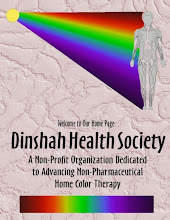
It's no wonder that fitness resolutions tend to fizzle in February. Chicagoans vow to get in shape at the worst possible time of the year, just when miserable weather forces us indoors.
We do have health clubs. And winter kicks off the mall-walking season. ("Meet in the food court!"). But some suspect we need more than just physical exercise to stay healthy. We need the emotional healing benefits of green exercise.
Also known as eco-therapy, green exercise simply means doing something, almost anything, outside. You won't necessarily burn more calories in nature's green gym.
But you can get substantial mental health benefits—reduced stress, depression and anger and enhanced mood and self-esteem—simply by seeking out the natural world, according to growing evidence from researchers in the U.S., Scandinavia and Britain.
In fact, in color therapy, green balances the nervous system and is believed to have a calming, soothing effect. It stimulates growth, and exposure to it is said to help those those suffering from depression, anxiety and nervousness.
Reconnecting with the environment could be as simple as viewing nature in a picture or through a window. Studies have shown that prisoners and hospital patients reported better health when living in rooms that face farmland and trees rather than brick walls.
Scenery also made a difference for another group of shut-ins: treadmill runners, according to researchers at the University of Essex in Britain. They found that runners who zoned out on idyllic rural views during a 20-minute run had the most substantial drop in blood pressure and the most improved psychological outcomes. The runners forced to look at gritty city environments, or "urban unpleasant" views, fared the worst.
Even those who had "no view" on the treadmill reported better outcomes than the ones looking at the run-down urban scenes.
Or green exercise could mean sitting in a park, biking to work, walking, fishing or digging in the dirt. The stress-reduction benefits of healing gardens in hospitals (which we could now call “green care”) date to the Middle Ages. And some say our modern hospitals, which focus on treating disease, have abandoned the healing properties that the connection to nature can bring.
Even mall walking, which can feel more fatiguing than an hour run, doesn't boost self-esteem as much as strolling through the woods for those diagnosed with mental health problems, according to Jules Pretty, a professor of environment and society at the University of Essex, a hotbed of green-exercise research.
"Clearly nature delivers important health benefits if we reorganize lifestyles and behaviors," Pretty recently wrote in a commentary published in New Scientist.
The biggest challenge, Pretty said, is redesigning cities to get people to walk more during normal working days.
"Fifty years ago, an average adult ran the equivalent of a marathon a week more than an average adult does today—and that was not running, just walking, cycling, being more active in the home," said Pretty, author of "The Earth Only Endures: Reconnecting With Nature and Our Place in It" (Earthscan, $29.95). "No wonder obesity is such a problem."
Locally, groups are working on ways to make green exercise easy and inevitable. Chicago's upcoming daylong Modeshift Conference 2008, to be held Feb. 28 at the Metcalf Federal Building, 77 W. Jackson Blvd., focuses on transforming a community’s transportation habits by teaching participants how to convert car trips to walking, biking and public transit.
This laudable goal is important for both ethical and economic reasons. But Pretty and other green-exercise advocates argue that there is another very good reason for conservation: the psychological and healing benefits of nature.
"Nature and living things, it seems, tend to make most people feel good," Pretty said. "The idea that the quality of nature in people's home neighborhood affects their mental health is not a new one, but it has not greatly affected the planning of our urban and rural environments, nor of public health priorities.
"Establishing emotional connections with the environment also inspires people to think about conservation and climate change," Pretty explained. "That, in turn, is likely to encourage environmentally friendly behaviors, a virtuous cycle of benefit to the environment."
Register for Modeshift, which is presented by the U.S. Environmental Protection Agency and the Chicagoland Bicycle Federation, at biketraffic.org/modeshift.
http://featuresblogs.chicagotribune.com/features_julieshealthclub/2008/02/the-best-brain.html







